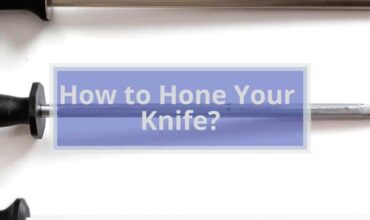Fillet knives are relatively hard to sharpen, because a professional, high quality fillet knife is narrow and extremely flexible, making it difficult to hold steady and achieve a consistent edge.
We recommend starting with an easy-to-sharpen knife to develop your technique as you learn the best way to sharpen a fillet knife. Kitchen knives with a wide flat surface to rest on are the simplest to practice with. Overcoming your initial learning curve with an easy knife will save you both time and effort.
In the following lines, we will show you how to sharpen a fillet knife, and you can practice the following steps on different types of knives.
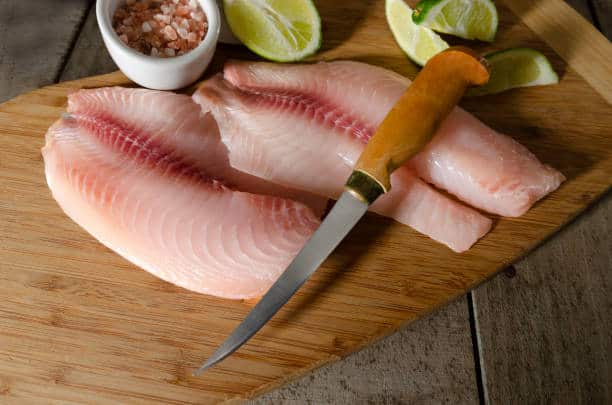
How to Sharpen a Fillet Knife?
1-How to Sharpen a Fillet Knife with a Whetstone?
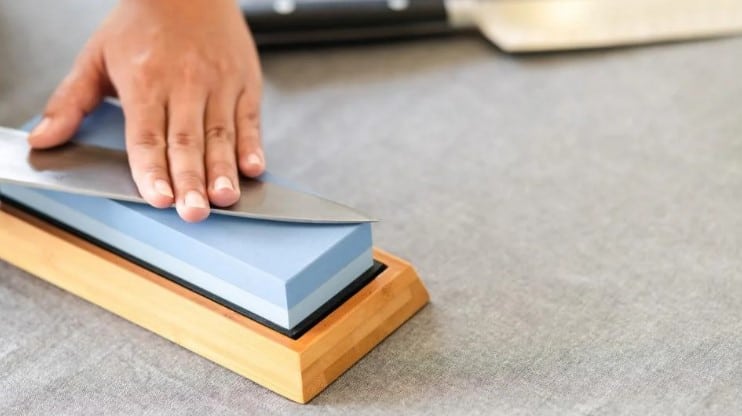
Using a sharpening rock, wet stone, or oil stone is one of the regular sharpening ways. It will provide you with additional control over your fillet blade. (take a look at the Best Sharpening Whetstone Set).
Steps
- Start sliding the knife end across the rock or water stone surface. It is similar to when you slice butter.
- Be careful not to make the knife’s thick end get in touch with the sharpening stone. Continue working until your fillet blade becomes honed.
- You can utilize a coin to keep the correct angle between your knife and the stone.
- Continue working on the two knife sides till you achieve the needed sharpness. This is how to sharpen a filletting tool with a sharpening stone.
2. How to Sharpen a Fillet Knife with an Electric Knife Sharpener?
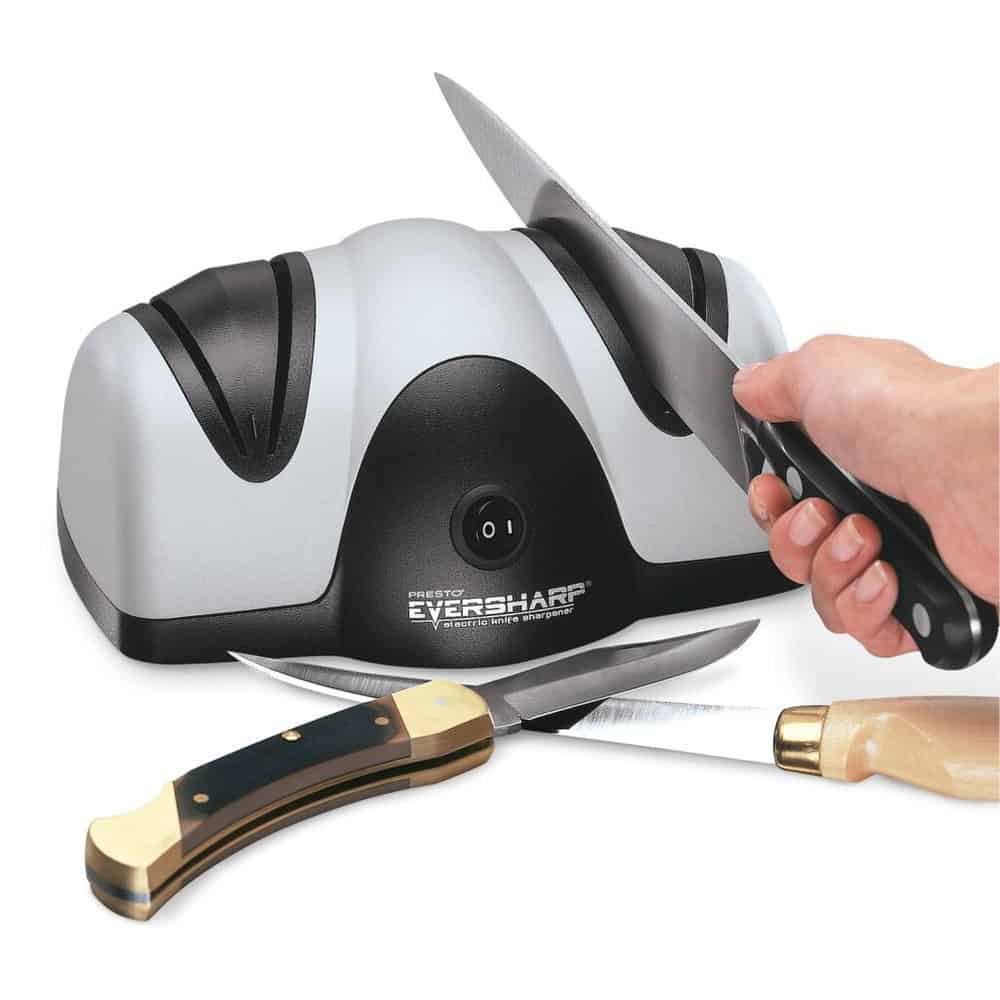
An electric sharpener is a simplest and most functional knife sharpening method, it is even much simpler than the manual sharpener method. Follow these steps to make sure you make the most of the electric knife fillet sharpener.
Check out our list of the best electric knife sharpeners.
Steps
- First, hold your knife or remove the instrument’s electrical knife.
- Put the knife cutting end within the convenient sharpening opening.
- Begin gently and slowly with light pressure, and do not use excessive pressure.
- Make sure to grip your knife firmly during working.
- Run the knife blade upward and downward. Make sure to keep the sharpener in the same serration if you hone serrated blade ones.
- Repeat that step till you achieve the sharpness you want.
3. How to Sharpen a Fillet Knife Using a Sharpening Steel
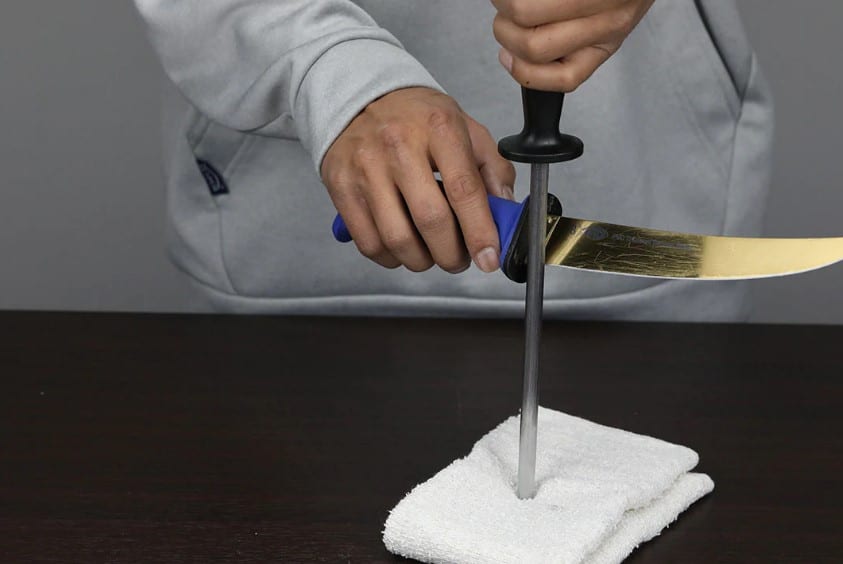
A sharpening rod is is another functional answer to the question: how to sharpen a fillet blade? Here is how to make the most of this brilliant knife sharpener.
Steps
- Maintain your knife stable and continue sliding the honing steel sharpener across the knife’s straight edge.
- Apply the original angle as the one you applied when using the honing stone.
- Slip your knife in the direction far from the body.
- Continue working till you achieve satisfying sharpness.
How to Sharpen an Electric Fillet Knife Blade?
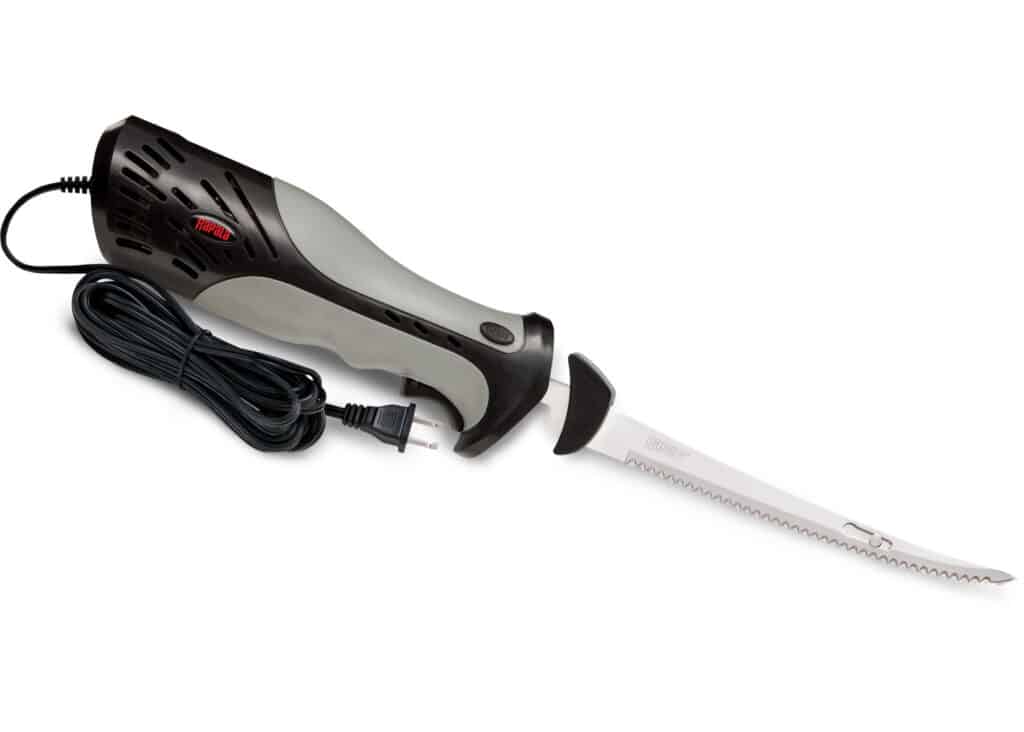
Electric fillet blades slice your fillets, poultry, and meat with mechanical pressure. Some of them have a battery that you can recharge. and others need electric current.
They have double serrated edges pinned with each other and vibrate by a tiny electrical motor. (check the best electric fillet knives on the market right now)
Required Tools
- A-Rod
Steps
- Take the electrical knife of the instrument gently.
- Grip the rod hardly. After that, take your blunt knife from the flat base and make sure the end is facing far from your body.
- Hold the sharpening rod in the initial knife serration. After That, start running your knife upward and downward across the sharpening rod.
- Assure that you do this in the same serration and the same direction
- Continue working till you achieve the desired sharpness.
- Repeat those steps for the remaining serrations.
Some Precautions to Consider During Electrical Knife Blades Honing
- Make sure to unplug the knife from the electrical socket before starting the honing task. This step looks obvious; however, accidents occur.
- Do not be in a hurry to finish the task. Besides, apply a little bit of pressure during sharpening. This quick job can lead to ruining the electrical knife; you may injure yourself during honing.
- Your hands must be dry, wet hands lead to slide danger. Besides, there is an electrical hazard with some electric blades.
- Never try to touch the sharp blade directly prior, through, or after honing. You should test it on another thing instead.
- The last thing is to never do quality compromising. You do not want to damage a pricey electric knife when you go with a low-quality sharpener.
How to Sharpen A Fillet Knife With Household Items?
knowing how to sharpen a fillet blade with an alternative method to sharpening tools is a helpful idea. It will save you a lot of money as you will utilize low-cost items.
There are many household items you can work on for knife honing. including a rock, a nail file, a rod, another knife, a leather belt, concrete, and more. let me talk about them in-depth.
1-Leather Belt
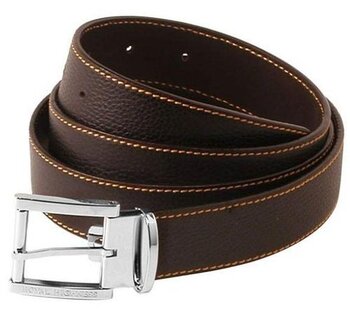
It’s super-duper easy! simply hon your blades across the leather belt length.
2-Nail File
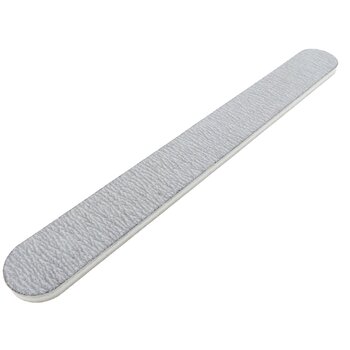
Steps
- Step 1. Hold the rugged and uneven part of the nail file.
- Step 2. You can do that by running your knife against the emery board. This one can help you to have a honed end.
3-Coffee Mug
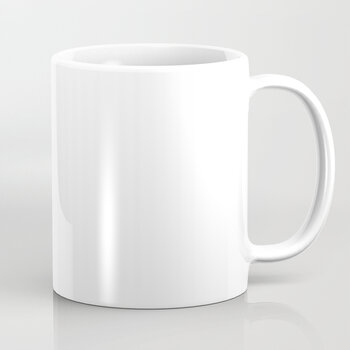
Steps
- Firstly, overturn your coffee mug. You will find a raw portion at the reversed coffee mug top.
- Start running your knife through the tougher area of your mug. Remember to choose a ceramic mug; the plastic one will not do this job. This is how to sharpen a fillet bladewith a coffee mug.
4-Concrete
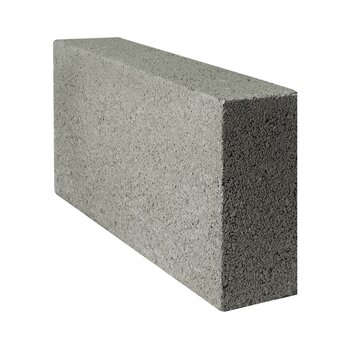
Steps
- Bring concrete with a smooth surface.
- Then start running the knife across the concrete. It is like when you do it with a sharpening stone. But, remember to pick a concrete part that will not harm the knife infrastructure.
5-Another Knife
A knife comes with two edge kinds: hone, slimy ends, and thick spines. You need to run the blades across the other knife’s spine.
Tips for Fillet Knife Sharpening
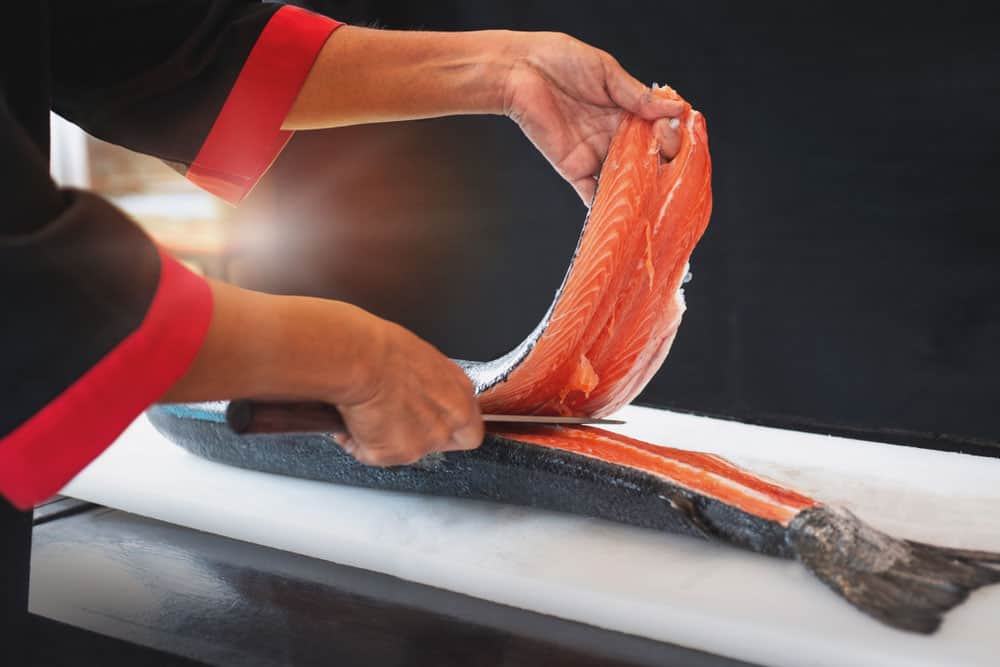
Before starting the fish knife sharpening process, there are a few instructions you need to follow to get the most out of the sharpening process.
1. Remove the Guard Clip
The guide clip can make the honing much easier. It provides a larger surface to rest your knife back. And sometimes when you are honing a thin knife or at a low and not proper angle, the guide clip will obstruct the blade from being connected with the honing stone.
So watch how the sharpening process works and choose if it is better to take off the clip or leave it.
2. Adjust the Sharpening Angle At 18-21 Degrees
If you lay the dull knife on the blade table with a low consistent angle, it will need a long sharpening period and lead to a soft edge. So you better adjust them to an 18- to 20-degree angle to get the best results.
3. Hone the Blade Portion Supported by the BladeTable
When you hone a flexible knife such as a filleting knife, you must ensure that the stone ruins on the blade tabletop, to prevent the blades from being bent through the sharpening process.
4. Slow Down
Honing the blades at a slow pace can help you to grab them stable on the blade table.
The sharpening stone can have a better cutting and will remain clean while sharpening. So You can test if it works at the correct pace by feeling it cutting over the blade. And In case you can not feel it, this means the sharpening process is too quick.
5. Polish the Edge
The polished edges cut better and will give you excellently cut fillets.
6. The Burr
You are not finished sharpening a side of the knife edge until you have a burr — a wire edge that forms on the opposite side of the scalloped blade from which you are sharpening. You might be able to spot a burr.
Alternatively, feel for the burr by pulling your fingertips away from the edge angle — across the back of the blade rather than toward the point or heel.
7. Push or Pull?
It doesn’t really matter, but still, it is recommended to lead with the edge, in a way that you pull the edge towards you and then, push it away from you.
8. Use Light Pressure when Sharpening and Honing
When attempting to sharpen their blades, many fishermen apply too much pressure, which is completely wrong, this will not only damage the blade and give dull spots, but it will also cause the fillet knife sharpener to wear out faster.
Maintaining and sharpening a knife requires only light pressure.
Tips for Fillet Knife Maintenance
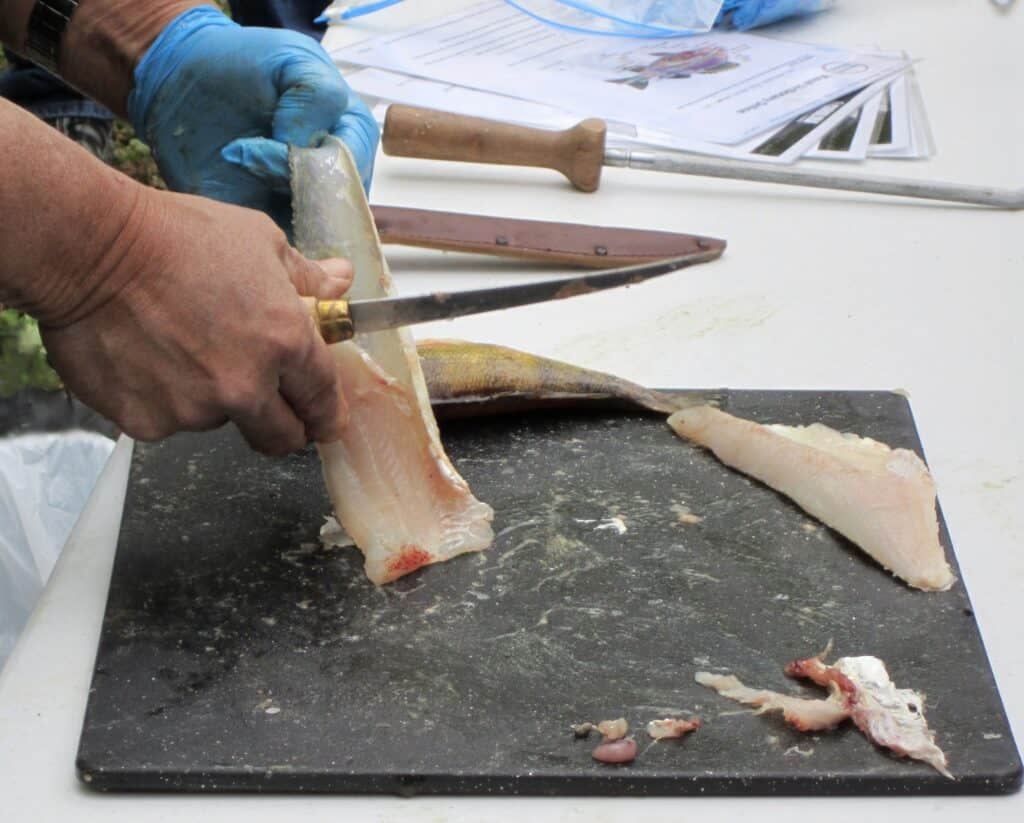
1. Do Not Put Your Fillet Knife in The Dishwasher
Dishwater soap contains caustic detergent, which will give proper cleaning plates and silverware. However, it could be harmful to the high-carbon stain-free steel used in a knife.
Furthermore, the high heat can damage the handle, particularly those made of wood, and the spray bar can knock the knife around, leading to a blunt knife edge. So, it is always recommended to hand-wash the knife with a mild-to-medium strength detergent and towel dry after each use.
Do Not Store the Knife with Other Metals
Do not put your knife at the metal pan bottom. By doing this, you will protect your sharp knife from any galvanic action. It is like when different types of metals get affected by one another. So, You can save the knife’s razor-sharp edge from damage.
Put them in closed drawers or any damp environment as a safety precaution, as in their sheath or block for knife storage.
Dry Your Knife Before Storing
After each use, make sure you wipe to dry with a smooth paper towel or a cloth.
Use A Scalloped Knife for the Initial Cuts
Sea bass, triggerfish, scup, and blackfish have tough scales that can dull a knife’s blade.
To keep the blade sharp, make the first cuts with a scalloped blade. Using the knife to poke and cut the fish not only maintains the blade sharp but also gives you the most meat, with a minimum amount of waste.
Wipe the Knife Down with Vegetable Oil
To protect your high-carbon steel blade, wipe the kitchen knives down with a coat of vegetable oil regularly, which will maintain them and prolong their sharpness.
Removing Rust from Fillet Knife
When exposed to salt water, even the best knife will rust. The old and trusted Bar Keepers Friend is hands down the best way to remove rust.
Since 1882, this magical concoction has been around. George William Hoffman invented it after noticing how a rhubarb pie helped remove rust from his steel pie pan. Rhubarb is high in oxalic acid, which is responsible for this product’s rust-removing abilities.
Don’t Use Your Knife on Glass Cutting Boards
Under no circumstances should you use your knife over a board made of glass or ceramic, the reason is ceramic and glass boards will ruin your expensive knives’ sharp edges.
It is also not recommended to use wood composite boards because they are hard enough to dull knife, if not completely damage your high-quality kitchen knives.
FAQ about How to Sharpen a Fillet Knife
What Are the Differences Between a Fillet Knife and Boning Knife?
A boning knife is made specifically to separate the bone and meat. On the other hand, a fillet blade is commonly helpful to remove skin and bones from meat, mainly from fish.
What is the Ideal Length for a Fillet Knife?
They are from 4 to 10 inches long. The short ones about 4 to 6 inches are meant for small fish such as perch, trout, and mackerel.
In case you search for a knife with more versatility that will work with almost any fish size, select the one from 7 to 8 inches long.
Also read , How to Hone Your Knife?
How Often You Will Need to Hone Your Blades?
You should do that every few months. The whole of this counts on how often you utilize them. it is also recommendable to give your blades a professional Sharpe each 1-2 years.
Why Do My Blades Become Dull So Quickly?
The material your blades come from is too rigid than anything you would typically cut. So the blunting effect on the knife-edge is too low.
But when the knife comes in contact with a more rigid material, this can increase blade dulling possibilities.
Take this as a rule, The more rigid the material your blades contact with, the quicker it will become blunt.
It would be best if you avoided any contact with a hard material to prevent premature blunting.
Why a Fillet Knife Becomes Dull
A knife’s edge has microscopic teeth, known as “feathers,” when examined under a microscope. Those feathers bend and break off with normal use.
To keep the blade sharp, an angler uses a tool like a butcher’s steel, which is made of a harder steel than the knife, to bend the feathers back into place.
Over time, the blade will need to be resharpened, which is the process of removing steel from the blade to produce a new feather edge.
Final thoughts
Now you know how to sharpen a fillet blade with different techniques. we expect you to never have a dull f again!




